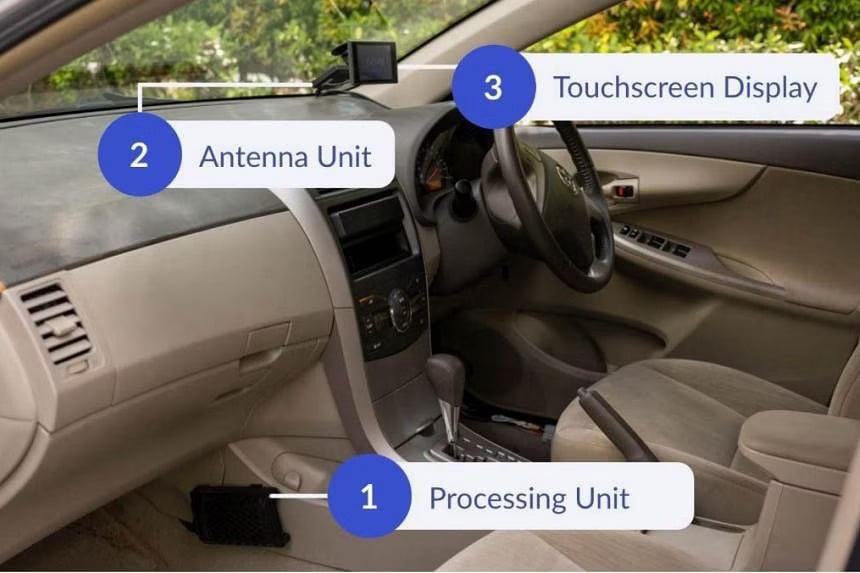If you own a vehicle or are someone who frequently drives, you’re likely aware of the recent developments regarding Electronic Road Pricing (ERP) 2.0.
If you need to get up to date on the latest information, let me break it down for you.
Starting 1 November 2023, vehicles in Singapore will gradually receive on-board units (OBU) for the next-generation ERP system, replacing the current in-vehicle units.
This process is expected to be completed by the end of 2025.
The Land Transport Authority (LTA) initially announced the installation of ERP 2.0 in 2020. However, the installation was delayed due to a global shortage of semiconductor chips, which was exacerbated by the COVID-19 pandemic.
Now, after three years, the new system is finally getting back on track. Here are six key facts about ERP 2.0 to keep you informed.
Nearly One Million Vehicles Will Be Equipped with New OBU
Starting on 1 November 2023, approximately one million vehicles will undergo the installation of a new OBU.
This includes approximately 20,000 fleet vehicles, which include public buses, fleet motorcycles, and taxis.

The devices will be installed for new vehicles in the first quarter of 2024. Meanwhile, existing vehicles will have their current in-vehicle units replaced in batches, depending on the vehicle’s age.
From 1 November 2023, selected fleet vehicle owners will receive notifications to schedule their OBU installation.
Subsequently, other vehicle owners will receive letters, emails, or SMS notifications. By the first quarter of 2024, all newly manufactured vehicles will come equipped with the OBU.
The installation takes approximately three hours for cars and about half that time for motorcycles.
No Change to ERP Charging after the New OBU Is Installed
The LTA has confirmed that there will be no changes to how motorists are charged for ERP during the transitional phase. However, the specific duration of this period was not disclosed.
Although the newly implemented system can calculate charges based on the distance travelled, the LTA has clarified that there are currently “no immediate plans to introduce distance-based charging.”
The OBU is fully compatible with the existing ERP and parking gantries.
Additionally, most of the current payment options for ERP will remain applicable to the OBU.
Motorists using stored value options, such as the EZ-Link card, will be required to insert the card into the processing unit.
For those who prefer backend payment methods, such as EZ-Link Motoring Service and Nets Virtual CashCard, which facilitate charges billed directly to credit or debit cards, these options will continue to be available.
Satellite-Based and Can Detect Whether a Vehicle Is in a Congested Area
The upcoming ERP 2.0 will leverage satellite technology to determine a vehicle’s presence in congested zones.
Each OBU will have three essential components: a processing unit, an antenna, and a touchscreen display.

In the case of motorcycles, these three components will be seamlessly integrated into a single, compact unit.
OBU Installation Is Free for All Eligible Singapore-Registered Vehicles
The LTA has confirmed that if the OBU is installed within the two-month window specified in the notification, it will be provided free of charge.
The LTA said it plans to release further details regarding the installation process for individual vehicles early next year.
All Singapore-Registered Vehicles Must Have the New OBU Installed
All Singapore-registered vehicles must have the new OBU installed. The installation details are as follows:
The processing unit, where drivers insert their payment card, will be near the front passenger seat.
The antenna and touchscreen display will be affixed to the vehicle’s windscreen.
Additionally, it provides real-time road and traffic updates, including the locations of silver zones, school zones, speed cameras, and bus lanes.
Reader: What are Silver Zones?
Silver Zones are designated residential areas with a significant senior population. Essentially, it warns drivers to reduce speed limits for safety.
Motorists are strongly encouraged to install all three OBU components to fully access various features, including the convenience of paying for roadside parking.
For motorcycles, the OBU components, including the processing unit, antenna, and touchscreen display, are seamlessly integrated into a single unit.
However, motorists who prefer not to install the touchscreen display can still access critical OBU information through compatible mobile apps on their smartphones.
These applications include LTA’s ERP 2.0 app and other third-party apps listed on LTA’s OneMotoring website.
Mobile Applications to Display Information on OBU
The LTA has released a comprehensive software development kit to support app developers seeking to incorporate and showcase ERP 2.0 data.
Mobile applications equipped with the kit will be capable of presenting various information retrieved from the OBU.
This includes road pricing alerts, billing details, payment status updates, traffic insights, card balances, status indicators for backend payment accounts, and more.
Once ERP 2.0 is fully deployed, the touchscreen display will offer expanded functionalities.
This will include real-time traffic alerts, such as road closures and accidents, as well as the ability for Singapore-registered vehicles to pay tolls at checkpoints.
Would you be jailed for being half-naked in public? Well, the answer will shock you. Seriously. Watch this to the end and you'll understand:




